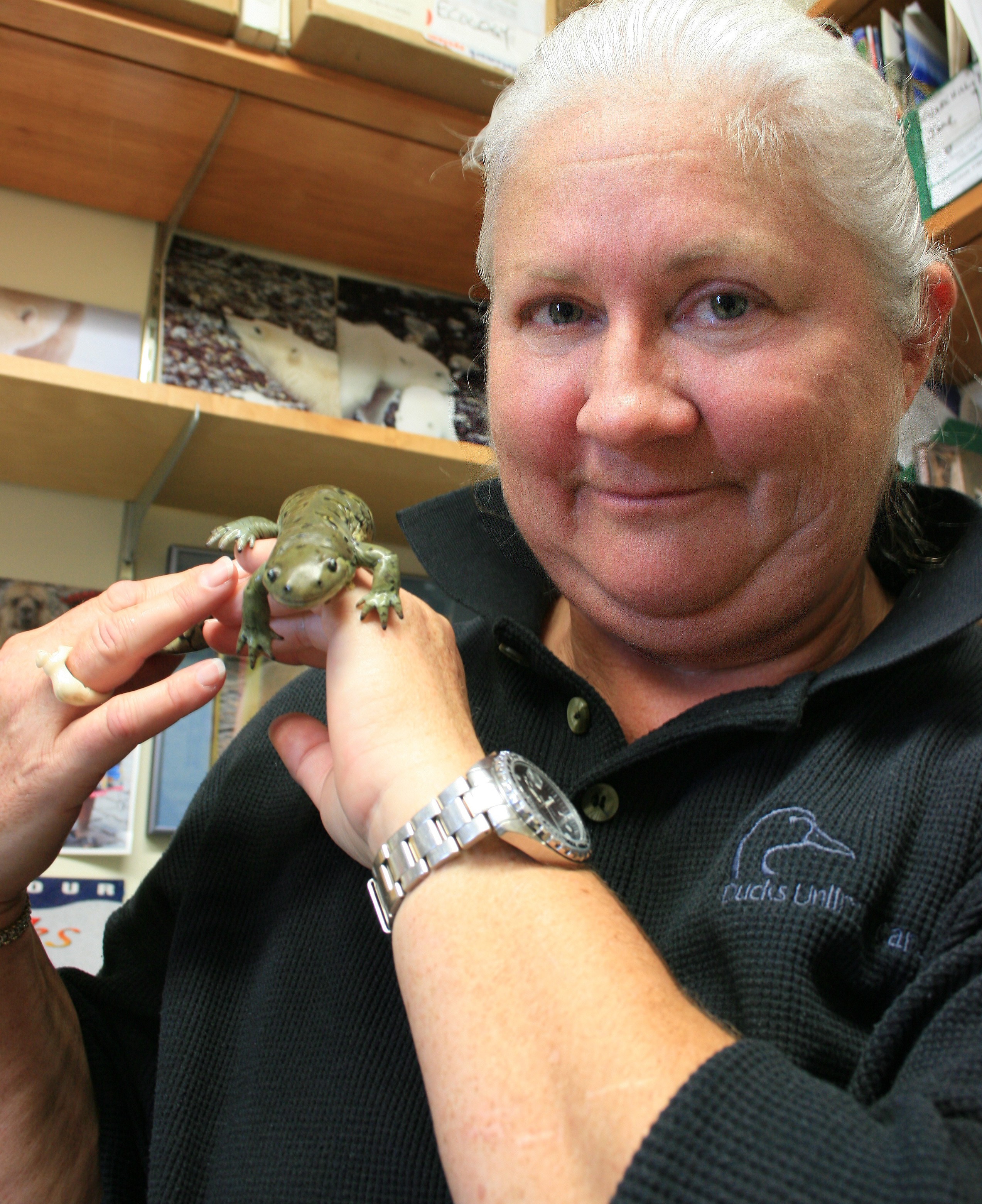Spreading the ecology message
Melanie Elliott may have the best office mates on campus – they’re extremely quiet, take up little space and never tie up the phone.
By Colleen MacPherson But Sniffles the garter snake, Sally and Mander the tiger salamanders, the collection of unnamed stick bugs and the big brown bats named Batrick and Elizabat are key members of Elliott's team in providing ecological education to the community, education that is centred largely on the message that "wildlife needs a place to live."
But Sniffles the garter snake, Sally and Mander the tiger salamanders, the collection of unnamed stick bugs and the big brown bats named Batrick and Elizabat are key members of Elliott's team in providing ecological education to the community, education that is centred largely on the message that "wildlife needs a place to live."
Elliott, who is the program manager for ecological education in the Centre for Continuing and Distance Education, brings both biology and education degrees, years of experience, and of course her animals to her work with school children, teachers and adults, work that ranges from in-class programs and the very popular Ecology Camps for Kids to tours that take people to very special, and often endangered, environments around the globe. While the ecology message is an important one, she also recognizes her role in demystifying the science and the university.
"I often feel like an interpreter," said Elliott. "I start with the academic and make the knowledge available to people."
Elliott got her start in ecology education in 1991 with the Saskatoon Zoo Society, a position she accepted after working some 10 years as a research technician at the U of S. "I gave up the research for teaching really, teaching volunteers, developing tours for school groups. I developed a Grade 1 program for the public school division and I just loved working with teachers."
Moving to what was then the university's Extension Division, Elliott set up Ecology Camps for Kids, a program now almost 20 years old, and ran field trips and workshops. "So much of our education is theoretical. I wanted people to learn about nature on the ground."
Her work in and around Saskatoon focuses largely on the conservation of wetlands and grasslands, a story she tells through the lens of the plants and animals that inhabit those environments. Children, she said, "know habitat is a big problem" and she leads them through building bird and bat houses, and discussions of endangered species. "All of this ties into waste reduction so I set up a worm composter for the classroom and get into their recycle bin and teach them how to make new paper. Children realize ‘Oh yes, we can do something that makes a difference.'"
Elliott works mainly with Grades 1-6 students and does about 30 workshops a year in classrooms. Her presentations are very closely tied to curricula "but you can make ecology fit almost anywhere." In terms of job satisfaction, a highlight is always "the nerdy kid who limpets onto you and says ‘This is the best day of my life.' Children don't hold back – they verbalize their excitement."
And nothing is more exciting for the kids, either in the classroom or at ecology camp, than meeting her animals although they are not the cutest of creatures – "I'm going with underdogs here." The salamanders and snake have met thousands of kids but it is the bats that really pique their interest. Elliott's interest in these mammals has actually made her the go-to person in Saskatoon when bats need rescuing. She has collected well over 100 bats around the city, many of which are knocked down by house cats.
"The vet college can only do so much with these animals," she said. "There's the rehabilitation part and the release part because the real goal is that they're returned to the wild." To help, Elliott has developed a hibernation protocol in her home cold cellar that allows her to safely house bats until mosquitoes appear in the spring and she can release them. While not protected by the province, she has a provincial permit to keep small animals, and a permit from the university's animal care committee because she uses them for teaching.
When it comes to adult ecological education through tours, "we really focus on national parks and protected areas. We give lectures before we leave on the geography, the culture and history of the area and often on wildlife and bird identification. The whole point is to make sure everyone has a rich experience."
The most popular tour on her schedule is to Churchill, Manitoba, a place she has been to 20 times, in summer to see Beluga whales and arctic nesting birds, and in fall to observe polar bears waiting on shore for the ice to form in Hudson Bay. There, and in destinations like Costa Rica, Elliott arranges accommodation at research facilities and finds opportunities to tap into the expertise of scientists working on site.
Inviting U of S faculty to participate in programs like ecology camps is another way Elliott works to "demystify the science." That and her keen awareness of the value of exposing kids to the university campus goes a long way in helping students make the transition to post-secondary life.
Elliott tells the story of being a high school student and taking a swim class at McMaster University. "I thought it was so cool to be on campus. I've had kids tell me ‘I wasn't afraid when I started university because this was my ecology camp.'"

